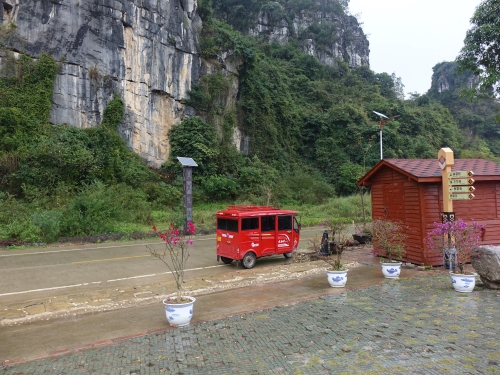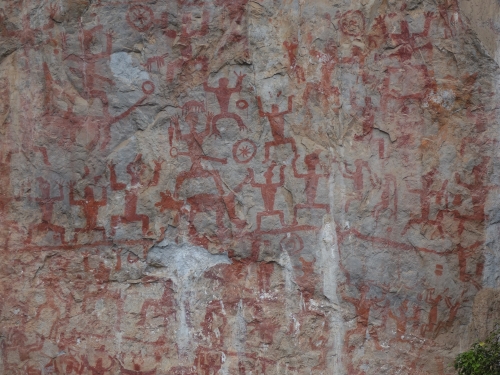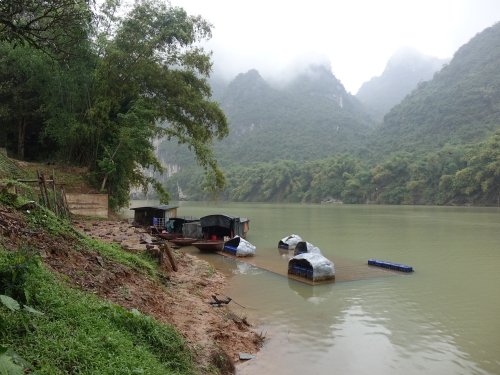Blog WHS Visits
WHS #692: Zuojiang Huashan
Zuojiang Huashan Rock Art is a rather difficult WHS to fit into a China travel itinerary as it lies in the far south, in the Guangxi Zhuang Autonomous Region. But it works well coming from Vietnam: the daily night train from Hanoi to Nanning stops every morning at 7.10 in Ningming. From that station you are only a few kilometres away from the ‘entrance’ to the rock art landscape. I’ve written some more logistical details at a separate Forum post for those who consider taking the same approach.

Having read the earlier reports by Zos and Zoë beforehand, I hoped to just find a taxi driver to take me to one of the viewing platforms instead of having to join one of the boat tours. But when I arrived it was raining and still dark. After some wanderings I found a tricycle driver, who dropped me off ca. 8km away at Zhoulian dock. I saw people doing construction work there, but not much else was going on. With the help of a translation app on her phone, one of the girls at the reception informed me that the first boat would leave at 11.30. That meant another 2.5 hour wait for me. But what else could I do – I was stuck.
Around 11 o’clock more (Chinese) tourists starting showing up, some 20 in total. It was still raining but fortunately the boat that is used for the tours is fairly large and covered, like a small cruise ship. A guide also went along and started explaining enthusiastically about the landscape we were passing through. Along the route I noticed several unnatural elements such as fake trees and spotlights, as if the river landscape recently had been used as a stage for a theatre production. It took almost an hour before we arrived at the first rock paintings. They were all added to the light sandstone walls that now and then appear along this river. Ningming Huashan is the largest panel containing 1951 of the total of 4050 paintings. This is actually the only really interesting part of the tour: there are so many drawings on that one cliff that from a distance it almost looks red.

It is striking how little variation there is in the images, they seem to be stamped. The explanation given is that they were subject to a strict set of rules - they evolved but the principles remained the same. The vast majority of them portray people (dancing puppets), there are circles with a star (representing bronze drums) and dogs. All this is linked to the ritual activities of the surrounding villages. There are no drawings of daily activities, as is common elsewhere in rock art.
I find it always interesting to think about what has caused people to create rock art. This relationship with the community is very visible here at Huashan by way of the villages that are located opposite the cliffs with the drawings. On the way back we moored at one of them: Laijiang. At first sight it did not look much different from an average Chinese village. However, its orientation is to the river and boats lie ready to transport goods and people. So it’s not surprising that the ancestors had such an intimate relationship with the river that they drew paintings on cliffs where you could best view them from a boat.

I must say that it was quite a miserable visiting experience overall. So how did this end up as a WHS anyway? I think much has to do with the very well prepared nomination file full of scientific explanations. The site is much better on paper than in reality. The area surely is not flooded with rock art and villagers that still worship it. I'd recommend to read about the qualities of the rock art and the interaction with local culture - for example at the website of the Bradshaw foundation - from the comforts of home.
Els - 9 January 2019